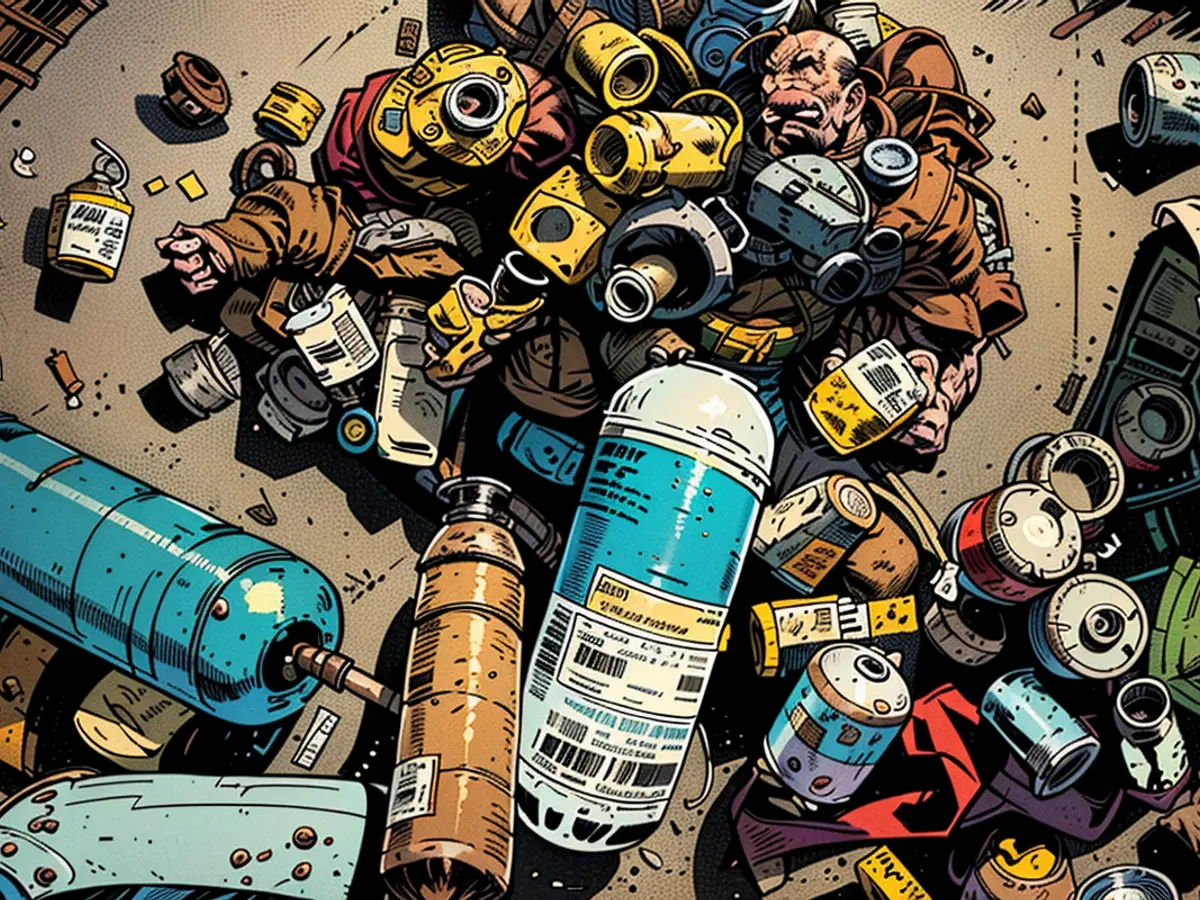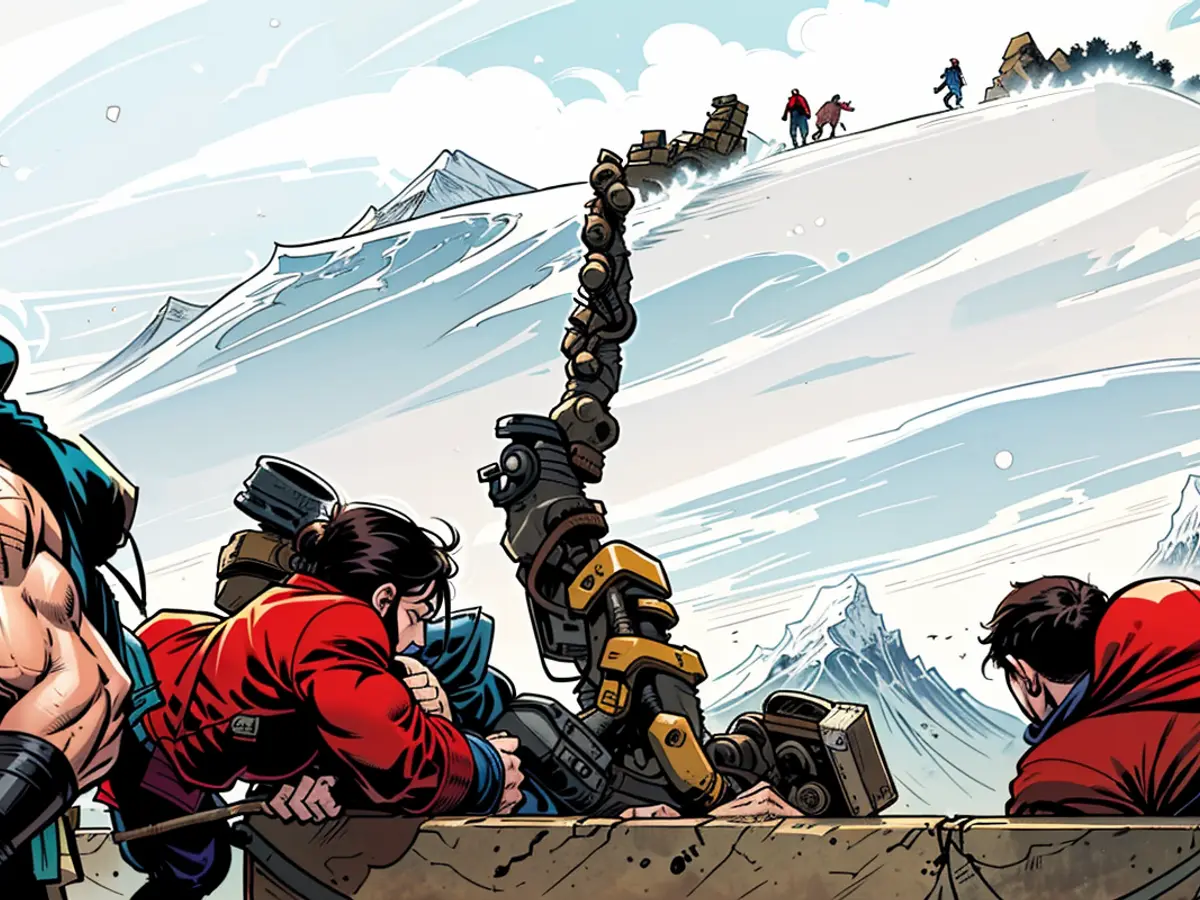Tonnes of frozen waste - Clean-up work at Mount Everest will likely take years
Two tons of garbage, four bodies, and a skeleton were removed from Mount Everest by a team of soldiers and Sherpas this mountain season. Led by Ang Babu Sherpa, the Nepalese government-funded crew. The Associated Press reported that there could still be 40 to 50 tons of garbage at the South Col, the last camp before the summit attempt. And the removal process is challenging.
Primarily, the weather poses a significant challenge for their work in the South Col region, where the oxygen content is only one-third of the normal value, winds can quickly turn into snowstorms, and temperatures in the tents can drop. "We had to wait for good weather for the sun to melt the ice. But under these conditions, it's simply not possible to wait for long," he said. "It's difficult to stay for long periods at such low oxygen levels." Excavating the garbage is also a significant task, as it is frozen in the ice, and it's not easy to break the blocks apart.
Mainly, the garbage consists of old tents, packaging for food supplies, gas cylinders, oxygen cylinders, tent packaging, and ropes used for climbing and securing tents. The frozen garbage lies in layers at 8,000 meters in altitude, where the camp at the South Col is located. "Most of the garbage comes from older expeditions," Ang Babu said. And further: "The oldest waste we received was from 1957, and that was rechargeable batteries for flashlights."
Mount Everest: Expeditions demand garbage deposit
It took two days to dig out a body near the South Col, which was deeply embedded in the ice. Halfway through, the team had to retreat to a lower camp due to worsening weather and could only resume work once the weather improved. Another body was located at 8,400 meters, and it took 18 hours to carry it to the camp, where a helicopter picked it up.

Clean-up operations in the Himalayas have been led by the Nepalese army since 2019. Soldiers and Sherpas reportedly collected approximately 120 tons of garbage from various mountains, along with 14 bodies and several skeletons. Additionally, there are incentives for people to bring garbage down from the mountain. Sherpa guides, for example, receive $130 for an empty oxygen bottle. This can then be reused.
Expedition organizations now require tourists to pay a deposit of $4,000 ($3,700 Euro) from each person, which is withheld if they are caught leaving garbage on the mountain. However, this is a manageable amount considering the costs of an average Everest ascent-descent: These typically range from 50,000 to 100,000 Euro per person. Included in these packages are costs for equipment, oxygen cylinders, tents, domestic flights, food, and a local Sherpa team.
See the video: Originally, local authorities wanted to limit mass tourism on Mount Everest. Now, footage shows climbers standing in lines this year.
Sources: Associated Press, dpa

- The Associated Press reported that the Himalayan Clean-up mission, led by the Nepalese army, has removed over 120 tons of garbage from various mountains, including Mount Everest, since 2019.
- The team faced challenges while cleaning the South Col, especially with the ice, as it was difficult to wait for the sun to melt it and break the frozen garbage blocks.
- Ang Babu, the team leader, mentioned that most of the garbage found at the camp was from older expeditions, including rechargeable batteries from 1957.
- Top-News headlines indicated that expedition organizations now require tourists to pay a deposit of $4,000 for each person to discourage leaving garbage on Mount Everest, considering the average ascent-descent cost of 50,000 to 100,000 Euro.
- The Associated Press highlighted the removal of two tons of garbage, four bodies, and a skeleton from Mount Everest by the Nepalese government-funded crew, led by Sherpa Ang Babu, as a significant step toward cleaning up the world's highest mountain.






